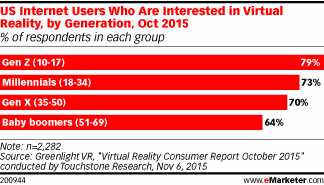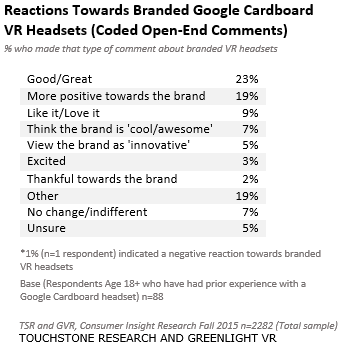B2C
5 Things Marketers Need to Know About Gen Z
“How do I talk to Gen Z?”
An executive at a major pharmaceutical company recently asked this question of Amanda Gutterman, VP of growth at digital media company Dose, which operates Dose.com and OMG Facts. The executive wanted to make sure his brand would appeal to teenagers, not only with an eye toward future sales, but also in order to attract top young talent.
Gutterman’s response? Be real. “Gen Z isn’t anti-corporate or anti-brand,” she said. “They just have an amazing nose for B.S.”
The pharmaceutical executive, who preferred to go unnamed, is hardly alone in his concern.
Based on new research, Goldman Sachs recently stated that “Gen Z matters more than Millennials.” These digital natives—generally classified as consumers born between 1998 and 2008—now represent 22 percent of the U.S. population, putting them right behind millennials (23 percent) and ahead of Gen X (21 percent). By 2020, they’ll make up a staggering 40 percent of all consumers.
How can brands relate to the first generation of kids who learned to swipe before they could walk? Here’s what you need to know about Gen Z to speak to them as a brand, create content that’s relevant to their lives, and steer clear of the B.S.
1. 63 percent of Gen Z want marketing from ‘real’ people
A survey conducted last year by digital agency Deep Focus found that 63 percent of Gen Z prefers to see “real” people in ads, while just 37 percent favor celebrities. And close to 70 percent are more interested in content with a “realistic ending” rather than a polished but unlikely narrative.
Swift, a creative agency based in Portland, calls Gen Z “walking ad blockers primed to avoid content that is not a trusted connection.” Winning them over matters, though, because 93 percent of parents say their Gen Z kids influence family spending decisions and household purchases.
“You don’t want to come onto a platform like Snapchat and be perceived as someone’s weird uncle trying to be cool—’Hey kids, I’m one of you, let’s play,'” Gutterman said. “That’s a trap social media managers fall into. When brands pander to this generation, that’s when they lose.”
“You don’t want to come onto a platform like Snapchat and be perceived as someone’s weird uncle trying to be cool.”
One way to avoid this is to enlist the help of social influencers, effectively putting a buffer between the marketing message and the brand.
“This generation is more likely to line up around the block at Vidcon [the annual online video conference] than stand outside a TV show taping,” said Alexa Tonner, co-founder and EVP of San Francisco-based social influencer agency Collectively.
After all, being a social influencer and being part of Gen Z is often one and the same. Gen Z is more likely than other generations to be “social creators” themselves; recent research shows about one-third of U.S. social media users between 16 and 34 are social influencers, meaning they either have a sizable following online or actively partner with brands.
2. Facebook is their most important social network
If you were asked to name the platform that occupies the most of Gen Z’s time, you might guess Snapchat. You almost certainly wouldn’t guess Facebook, which has a reputation for attracting older folks more than teens. But while Snapchat is the most-used platform for 51 percent of Gen Z, all the talk about teens and tweens shunning Facebook is largely a myth.
“Facebook is constantly innovating and bringing users all kinds of new reasons to use it.”
According to marketing agency Fluent, 67 percent of older Gen Zers regularly use Facebook, while 50 percent name the Facebook-owned Instagram—only one percentage point behind Snapchat. Facebook was also named by 26 percent of respondents as the social network they use “constantly,” compared with 23 percent for Snapchat. Nearly half of respondents said they log onto Facebook multiple times a day.
“The teens we surveyed directly actually classify Facebook as the most important social channel because it’s such a comprehensive directory of people and brands,” said Rick Albano, executive creative director at Swift. “For them, it’s like the modern-day phonebook. There’s a ton of information they don’t pay attention to—until they need it.”
Albano added that the social site’s ongoing efforts to enhance its user experience meet Gen Z’s evolving interests and needs. Over the past year, Facebook has launched customer support and content chatbots, acquired face-swapping app MSQRD, and introduced live-streaming video product Facebook Live.
“Facebook is constantly innovating and bringing users all kinds of new reasons to use it,” Albano said.
Ferrara Candy Company, which markets candy brands like Trolli that count both Gen Z and millennials among their target consumers, sees “significantly higher engagement rates” with Instagram and Snapchat, has success with Facebook’s paid promotion, and also has its sights set on Facebook Live.
“The new Facebook Live feature is something we will be leveraging in the near future to drive engagement with our Gen Z fans,” Jill Manchester, Ferrara Candy’s SVP of marketing and brand strategy, told me.
3. Gen Z wants to participate
Don’t expect Gen Z to simply sit back and watch, on Facebook or anywhere else. Based on a global study, PR and communications agency Zeno Group believes companies must give Gen Z “a job to do” and “let them be brand advocates.” Interactivity and content collaboration, therefore, are key content principles.
Collectively—which works with brands like Old Navy, Gap Factory, Zappos, and Pandora—stresses that while Gen Z is inclined to participate in the brand experience, they’ll only do it when they respect the brand. Alexa Tonner advises companies to make sure their content accurately reflects their brand image and voice, be it through humor or emotional subject matter, to ensure it doesn’t come off as forced.
“Be empowering,” she said, “not overbearing.”
With that in mind, Collectively recently helped internet radio company Pandora promote its new Thumbprint Radio feature with user-generated content.
“The campaign was all about capturing that #nofilter reaction when your favorite jam comes on, and our collaborators did just that with humor and amazing dance moves,” Collectively wrote in a case study about the campaign. In other words, it used regular people, and asked them to join in on the fun.
4. 79 percent of Gen Z is interested in VR
Gen Z loves digital video on platforms like YouTube and Facebook, to the point they’re now watching considerably more internet video than TV. The next technology to consume them, however, will be virtual reality.
According to a study conducted by Greenlight VR and online research firm Touchstone Research, 79 percent of U.S. internet users 10 to 18 are interested in VR—six percentage points more than millennials.

“It’s the ultimate empathy machine,” Gutterman said. “It does more than just entertain, it deeply educates and inspires people on an emotional level in a way that less sensory communication methods can’t.”
At the moment, the VR market is still ramping up. Oculus Rift—the flagship VR headset from Facebook-owned Oculus—was only released in March of this year, while the HTC Vive came out in April. Samsung’s Gear VR has been available since November, but Sony’s PlayStation VR won’t launch until this October, and we’re still waiting for Microsoft HoloLens, which promises augmented reality.
Still, by this past January, Google had shipped upwards of 5 million units of its inexpensive Google Cardboard headset to help build the hype. Brands that routinely target Gen Z, like Gillette and McDonald’s, are investing in VR experiences already, but another course of action for companies is to offer branded Google Cardboard headsets along with their custom VR experience. Touchstone Research and Greenlight VR’s findings show that, so far, consumers are responding favorably to this approach.

5. You have 8 seconds to engage them
It’s been said that Gen Z has “highly evolved eight-second filters” for content. But that doesn’t mean they can’t, or won’t, pay attention to worthwhile content. Collectively’s Tonner points out that this is the same generation known for watching hours of live video-game streams and 20-minute YouTube beauty tutorials through to the end.
“A lot of people are making really beautiful things deserving of that attention,” Gutterman explained. “That’s why they’re flipping. These are people with different expectations.”
Swift attempts to reach them by creating branded emojis for companies like Starbucks and an animated GIF keyboard for Hot Pockets.

Ferrara Candy produces GIF content for Twitter and Tumblr, but went with slightly longer, 60-second spots in a recent 1980s-inspired video series featuring NBA star James Harden and Trolli Sour Brite Crawlers. The videos generated more than 1.3 million views across all platforms and more than 1,500 shares on Facebook alone.
“Gen Z can tend to tune out if you don’t catch their attention immediately,” Manchester said. “We have this in mind every time we’re creating content for share-ability.”
But while animated GIFs and video can help brands grab their attention fast, they’re not necessarily enough to keep them watching.
“They are drawn to voices and personalities they identify with or aspire to,” Tonner said. “Brands that embrace that kind of voice are doing really well.”
Image by GettyGet better at your job right now.
Read our monthly newsletter to master content marketing. It’s made for marketers, creators, and everyone in between.




